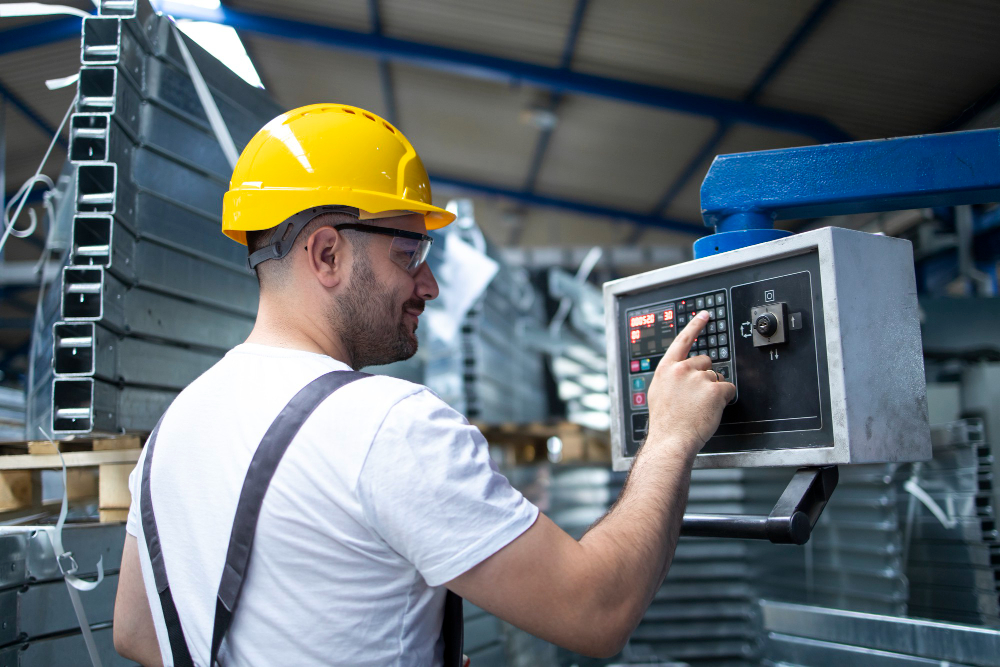In today’s advanced manufacturing landscape, CNC machinists play a crucial role in producing precision parts for aerospace, automotive, medical, and defense industries. With the rise of automation and computer-controlled machinery, the demand for skilled CNC machinists continues to grow.
What Is a CNC Machinist?
A CNC (Computer Numerical Control) machinist operates and programs CNC machines to manufacture precision metal or plastic parts. These machines follow coded instructions (G-code) to cut, drill, mill, and shape materials with extreme accuracy.
Key Responsibilities of a CNC Machinist:
- Reading and interpreting blueprints and technical drawings
- Setting up and calibrating CNC machines
- Loading materials and securing workpieces
- Monitoring machine operations to ensure precision
- Performing quality checks using micrometers, calipers, and gauges
- Troubleshooting and adjusting machine settings
- Performing routine maintenance on equipment
CNC machinists work in various industries, including:
✔ Aerospace (aircraft components)
✔ Automotive (engine parts, transmissions)
✔ Medical (surgical instruments, implants)
✔ Defense & Military (weaponry, armored vehicles)
✔ Consumer Electronics (smartphone components)
Essential Skills for a CNC Machinist
To excel in this career, you’ll need a mix of technical knowledge, hands-on skills, and problem-solving abilities.
1. Technical & Mechanical Skills
- Understanding of G-code and CAM software (Mastercam, Fusion 360)
- Proficiency in reading blueprints and CAD models
- Knowledge of metrology (precision measurement tools)
- Familiarity with different machining processes (milling, turning, grinding)
2. Attention to Detail
- CNC machining requires tight tolerances (often within 0.001 inches).
- A small error can lead to costly mistakes or defective parts.
3. Problem-Solving & Troubleshooting
- Identifying and fixing machine malfunctions
- Adjusting feeds, speeds, and tool paths for optimal performance
4. Math & Computer Skills
- Strong grasp of geometry, trigonometry, and algebra
- Ability to work with CNC programming software
5. Physical Stamina & Safety Awareness
- Standing for long hours near heavy machinery
- Following OSHA safety guidelines to prevent accidents
How to Become a CNC Machinist
Step 1: Get the Right Education
While some machinists learn on the job, employers increasingly prefer candidates with formal training. Options include:
- High School Diploma or GED (with courses in math, physics, and shop class)
- Technical School or Community College Programs (1-2 year CNC machining certifications)
- Apprenticeships (paid on-the-job training under experienced machinists)
Step 2: Gain Hands-On Experience
- Start as a CNC operator to learn machine basics
- Progress to setup technician and programmer roles
Step 3: Earn Certifications (Optional but Beneficial)
- NIMS (National Institute for Metalworking Skills) certifications
- CNC Programming Certifications (e.g., Mastercam, SolidWorks)
Step 4: Build a Strong Resume & Apply for Jobs
Highlight:
- Experience with specific CNC machines (e.g., Haas, Mazak)
- Knowledge of GD&T (Geometric Dimensioning & Tolerancing)
- Any specialized industry experience (aerospace, medical, etc.)
CNC Machinist Salary & Career Growth
Average Salary (2024 Data)
- Entry-Level:
- 40,000–
- 40,000–50,000 per year
- Experienced:
- 50,000–
- 50,000–70,000+
- Senior/Programmers:
- 80,000–
- 80,000–100,000+
Salaries vary based on:
📍 Location (Higher pay in manufacturing hubs like Michigan, California)
🏭 Industry (Aerospace & defense pay more than general manufacturing)
📜 Certifications & Specializations (5-axis machining, Swiss machining)
Career Advancement Opportunities
With experience, CNC machinists can move into roles like:
- CNC Programmer
- Manufacturing Engineer
- Shop Supervisor or Production Manager
- Quality Control Inspector
Future Trends in CNC Machining
The industry is evolving with new technologies:
1. Automation & Robotics
- More shops are using collaborative robots (cobots) to assist machinists.
- Lights-out manufacturing allows CNC machines to run unattended.
2. AI & Machine Learning
- Predictive maintenance reduces machine downtime.
- AI-powered CAM software optimizes tool paths for efficiency.
3. Additive Manufacturing (3D Printing + CNC Hybrids)
- Companies combine 3D printing and CNC machining for complex parts.
4. Increased Demand for Skilled Machinists
- As older machinists retire, job opportunities will grow for trained professionals.
Conclusion: Is CNC Machining a Good Career?
Absolutely! CNC machining offers:
✅ High demand & job security
✅ Competitive salaries & advancement opportunities
✅ A blend of technical and hands-on work
If you enjoy problem-solving, working with advanced machinery, and producing precision parts, becoming a CNC machinist could be the perfect career for you.
Ready to start? Enroll in a CNC training program today and take the first step toward a rewarding career in advanced manufacturing!
FAQs About CNC Machinists
Q: How long does it take to become a CNC machinist?
A: It can take 6 months to 2 years, depending on training (certificate programs vs. apprenticeships).
Q: Do CNC machinists need a degree?
A: No, but certifications and hands-on training are highly recommended.
Q: Is CNC machining physically demanding?
A: Yes, it involves standing for long hours and lifting materials, but automation is reducing physical strain.
Q: What’s the difference between a CNC operator and a CNC machinist?
A: An operator runs the machine, while a machinist sets up, programs, and troubleshoots it.

